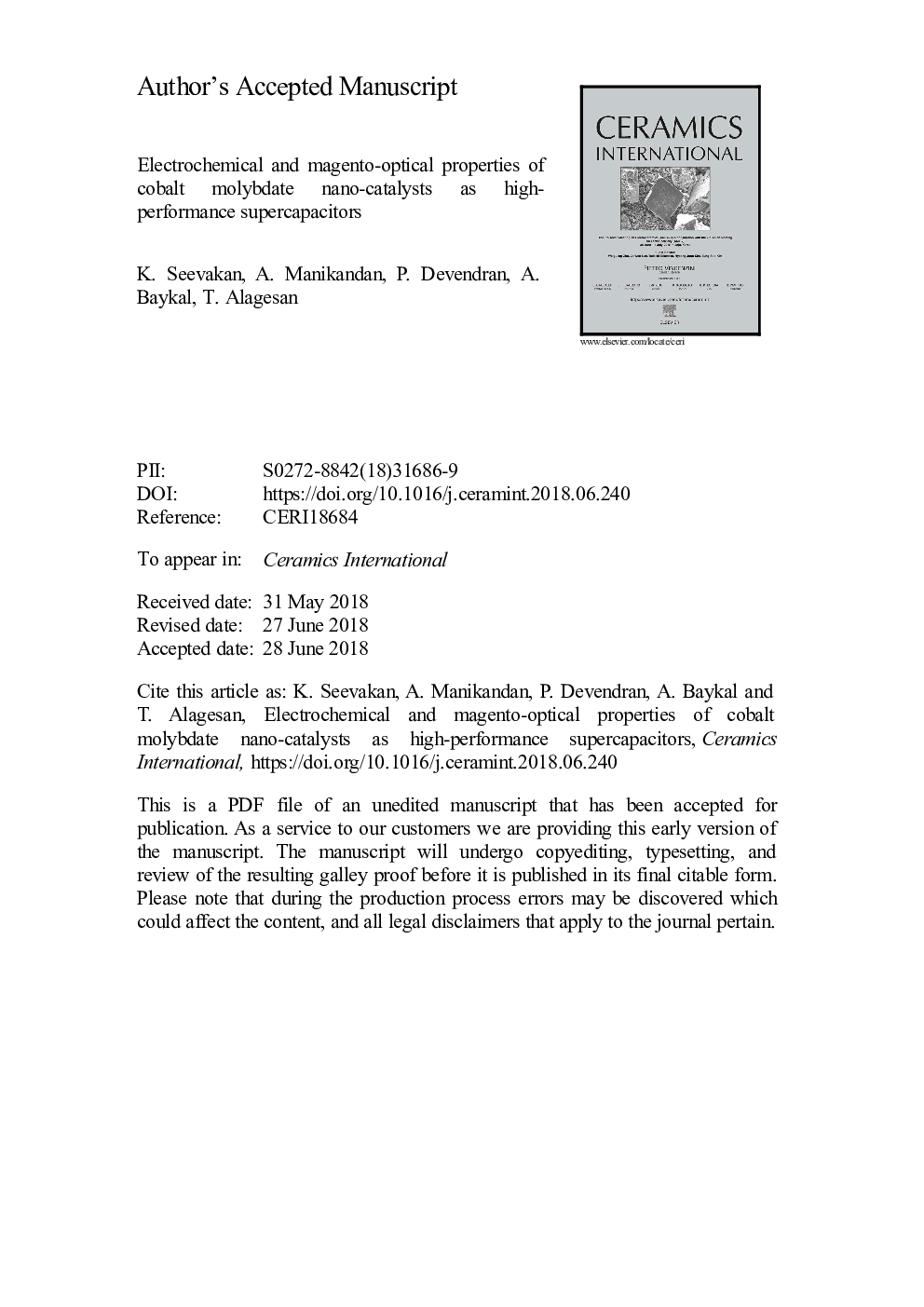| Article ID | Journal | Published Year | Pages | File Type |
|---|---|---|---|---|
| 8948444 | Ceramics International | 2018 | 34 Pages |
Abstract
Nanorod shaped cobalt molybdate (CoMoO4) electro-catalysts synthesized by microwave combustion route using urea as the fuel. The formation of monoclinic nanocrystalline structure, metal-oxygen (M-O) and chemical bonding was confirmed by X-ray powder diffractometry (XRD), Fourier transform infrared (FT-IR) and Raman spectroscopy, respectively. Scanning electron microscope (SEM) associated with energy dispersive X-ray (EDX) and high-resolution transmission electron microscope (HR-TEM) were used to confirm the morphology, elemental composition and particle size of the samples, respectively. The optical and defects were confirmed by the UV-vis. absorption and photoluminescence (PL) spectroscopy at room temperature (RT). The room temperature magnetic behaviors of product were investigated by vibrating sample magnetometer (VSM). Surface binding energy and element confirmation were examined by X-ray Photoelectron spectroscopy (XPS). The electrochemical (EC) performance was studied by cyclic voltammetry (CV), galvanostatic charge-discharge analysis (GCD) and electrochemical impedance spectroscopy (EIS) analysis. The CV curve proved the existence of redox pairs and the supercapacitor nature exhibited by the EIS (Nyquist plots). The GCD studies provided the non-symmetrical discharge curves and the highest specific capacitance (Csp) of ~ 133â¯F/g were acquired at a constant discharge current density (1â¯mA/cmâ2). The cyclic stability investigations revealed capacitance retention of about 100% after 1000 cycles, proposing the prospective usage of CoMoO4 in energy-storage devices.
Related Topics
Physical Sciences and Engineering
Materials Science
Ceramics and Composites
Authors
K. Seevakan, A. Manikandan, P. Devendran, A. Baykal, T. Alagesan,
